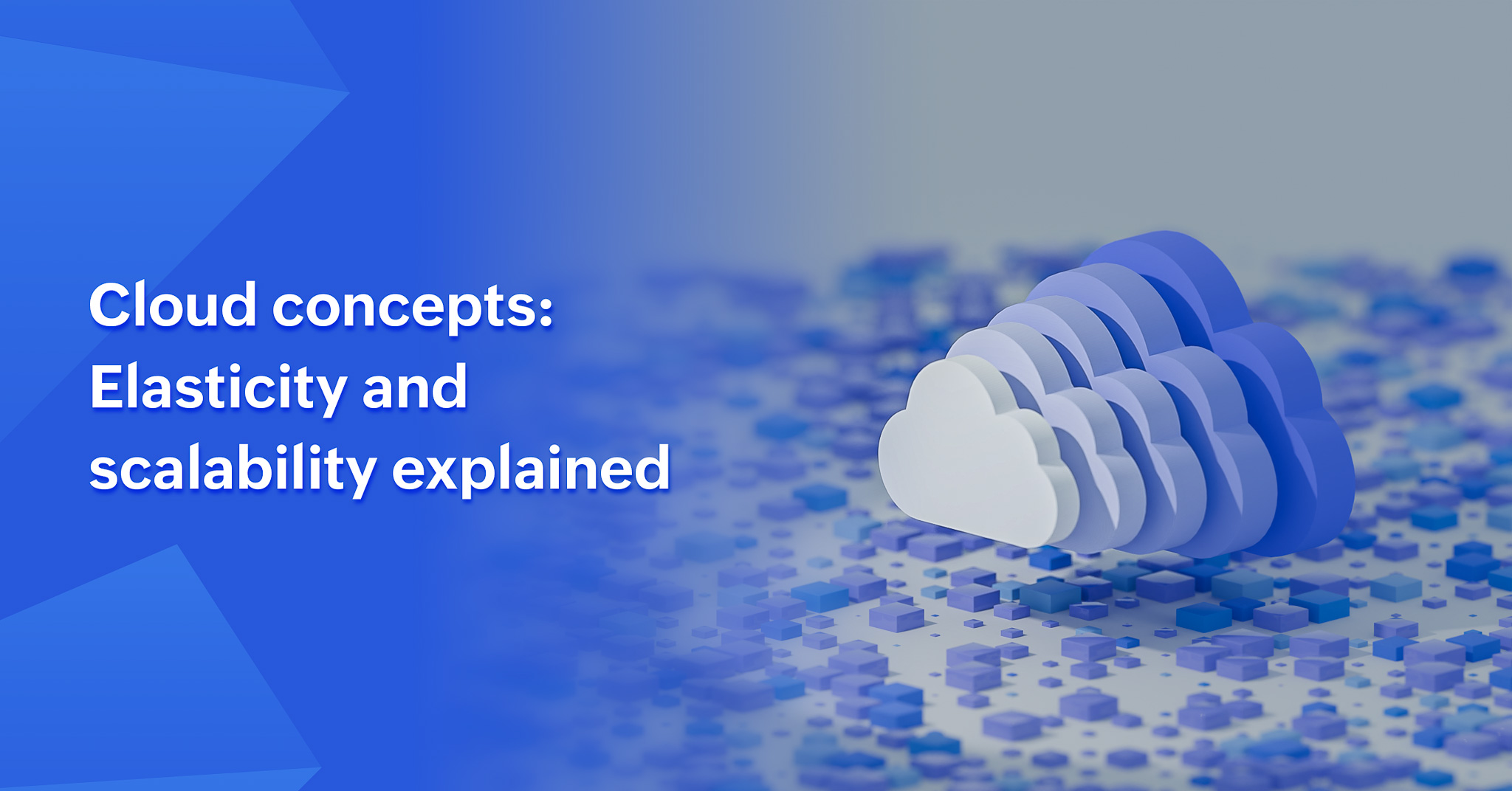Demystifying the cloud: Elasticity vs. scalability

Elasticity and scalability are essential aspects of cloud computing and crucial for optimizing resource management and ensuring seamless operations. However, despite their importance, these concepts are often confused. Understanding their distinct purposes and functionalities is essential for fully leveraging the power of cloud technology.
This article explores what cloud elasticity and scalability are, their key differences, and why both matter for efficient cloud environments.
What is cloud elasticity?
Cloud elasticity is the ability of a cloud system to dynamically adjust resource allocation in response to changing demand. This means resources can be automatically provisioned and deprovisioned in real-time as the workload fluctuates.
Key characteristics of cloud elasticity
- Automatic resource adjustment: Elasticity allows for the automatic addition or removal of resources, ensuring that applications have exactly what they need to function optimally at any given time.
- Real-time scaling: The system can respond in real-time to changes in demand, such as sudden spikes in traffic.
- Cost efficiency: By allocating resources dynamically, elasticity helps in avoiding over-provisioning and under-provisioning to optimize costs.
Examples of cloud elasticity
E-commerce platforms: E-commerce platforms experience a significant surge in traffic during major sales events like Black Friday. Elasticity allows these platforms to handle the increased load by automatically scaling up resources.
Media streaming services: Streaming services need to adjust their resources during peak viewing times to ensure a smooth user experience.
What is cloud scalability?
Cloud scalability, on the other hand, is the capability of a cloud system to handle increasing workloads by adding resources to meet the growing demand. Scalability is primarily about capacity planning and ensuring that the system can grow as needed.
The types of cloud scalability involve:
- Vertical scalability (Scaling up): This involves enhancing the capacity of an existing system by adding more power, such as additional CPU or RAM.
- Horizontal scalability (Scaling out): This involves adding more servers or nodes to a system, distributing the workload across multiple units.
Examples of cloud scalability
Expanding database capacity: A business experiencing consistent growth may need to scale its database vertically to handle larger volumes of data.
Adding servers: A web application with increasing user traffic may need to scale horizontally by adding more servers to maintain performance.
Key differences between elasticity and scalability
While both elasticity and scalability are crucial for managing cloud resources, they differ in several key aspects:
Elasticity | Scalability | |
Purpose | Immediate, real-time resource adjustment for variable workloads | Long-term growth and ability to handle increasing workloads |
Resource management | Dynamic, short-term response to changes in demand | Long-term planning to ensure the system can grow |
Use cases | Applications with fluctuating workloads, such as seasonal business applications | Applications with predictable growth patterns, such as steadily expanding businesses |
Automation vs. manual intervention | Highly automated with minimal manual intervention | Often requires manual planning and intervention |
Reaction time to demand changes | Rapid, real-time response | Gradual, planned response |
Resource allocation strategy | Automatic provisioning and deprovisioning of resources | Addition of resources (vertical or horizontal) as needed |
Challenges |
|
|
Elasticity vs. scalability: Why you might need both
Understanding and implementing both elasticity and scalability is crucial for maximizing cloud computing benefits:
- Cost efficiency: Elasticity adjusts resources in real-time, ensuring you only pay for what you use, while scalability allows for long-term resource planning, avoiding constant upgrades.
- Performance: Elasticity keeps applications responsive during traffic spikes, and scalability handles increased loads over time without degrading performance.
- Business agility: Elasticity enables quick responses to market changes, and scalability ensures seamless growth and expansion.
A use case would be of an e-commerce platform that demonstrates both elasticity and scalability of its cloud environment. During major sales events like Black Friday, elasticity allows the platform to dynamically adjust resources to handle sudden traffic spikes, ensuring smooth user experiences. Meanwhile, scalability ensures the platform's infrastructure can grow to support long-term increases in user demand and data processing as the business expands globally.
Optimize elasticity and scalability with cloud monitoring
Understanding elasticity and scalability is crucial for optimizing cloud resources. Elasticity adjusts resources in real-time to meet fluctuating demands, supported by cloud monitoring tools that provide usage insights. Scalability involves long-term planning and growth, with monitoring aiding in trend identification and resource forecasting. Site24x7's cloud monitoring solution offers comprehensive cloud observability for AWS, Azure, and Google Cloud Platform. With Site24x7, businesses can enhance their ability to scale efficiently while maintaining cost-effectiveness and ensuring optimal performance under varying conditions to unlock the full potential of the cloud.
Comments (0)